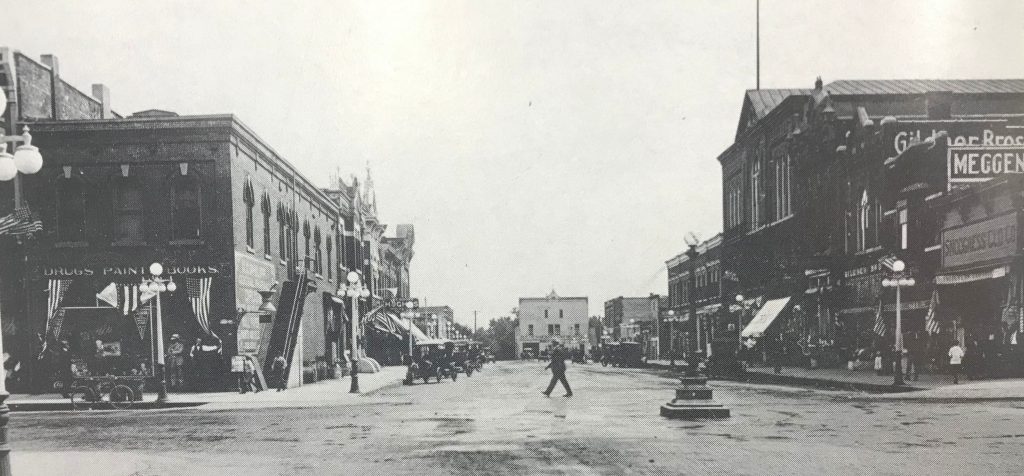Early Explanation of a Changing Climate
Delaware county, Iowa

The 1914 History of Delaware County and Its People describes the severe winters of the mid-nineteenth century such as those experienced by John and Sarah Kenyon. The winters were so long and severe, declares the history, that there was good sleighing from Thanksgiving in November all the way to the 15th of March. The ice on all bodies of water was thick enough to bear a man’s weight. The farmers’ rail fences caught so much snow– that then froze– that “a team [of horses or oxen] could go over the fences.”
Having said this, the 1914 history then observes that the winters have since changed. Climatic conditions have changed in the last 50 years, they write. The winters are not so cold and the snow is not so deep and cold waves don’t continue so long. Their observations are consistent with those of scientists. In the early twentieth century there were theories about this change. The writers offer their own: “There was an unbroken wilderness where now there is cultivation. The county is settled to the coast and heat is going up out of millions of chimneys. Besides this railroad engines and furnaces send up volumes of heated air. These and many other minor things have brought about the change.”
From a period 1300-1850 some parts of the global were, on average cooler. North America was part of this cooling trend. So the earliest winters for Yankee and European settlers in Iowa did exhibit these traits. But, as the historians in 1914 observe, by the end of the nineteenth century this was changing and it has been changing ever since. Their explanation for the change—the burning of wood and coal in stoves, coal in locomotives, coal and other carbon-based fuels in factories, though not documented as science—is consistent with the global heating of the atmosphere that nineteenth-century scientists were already finding in their research.
Irish physicist John Tyndall described a greenhouse effect when certain gasses (carbon dioxide, methane) are trapped as they are in the Earth’s atmosphere. His name is well known in scientific circles. Eunice Foote is not, but in 1856 she presented a paper about her own experiments with the sun heating certain atmospheric gasses and creating a global warming effect. She even published her results in Scientific American in 1856.

It was not so much the heat itself from chimneys, locomotives, and industrial furnaces that was warming the climate but rather the gasses emitted by what was being burned and the way these gases trap the heat in the ever so thin atmosphere that encircles the Earth. Still the historians were paying attention to the observable evidence of a changing climate in Delaware County and reporting on what they observed.
Sources: SHSI: History of Delaware County and Its People, Chicago, 1914; Smithsonian Magazine, December 5, 2016.
